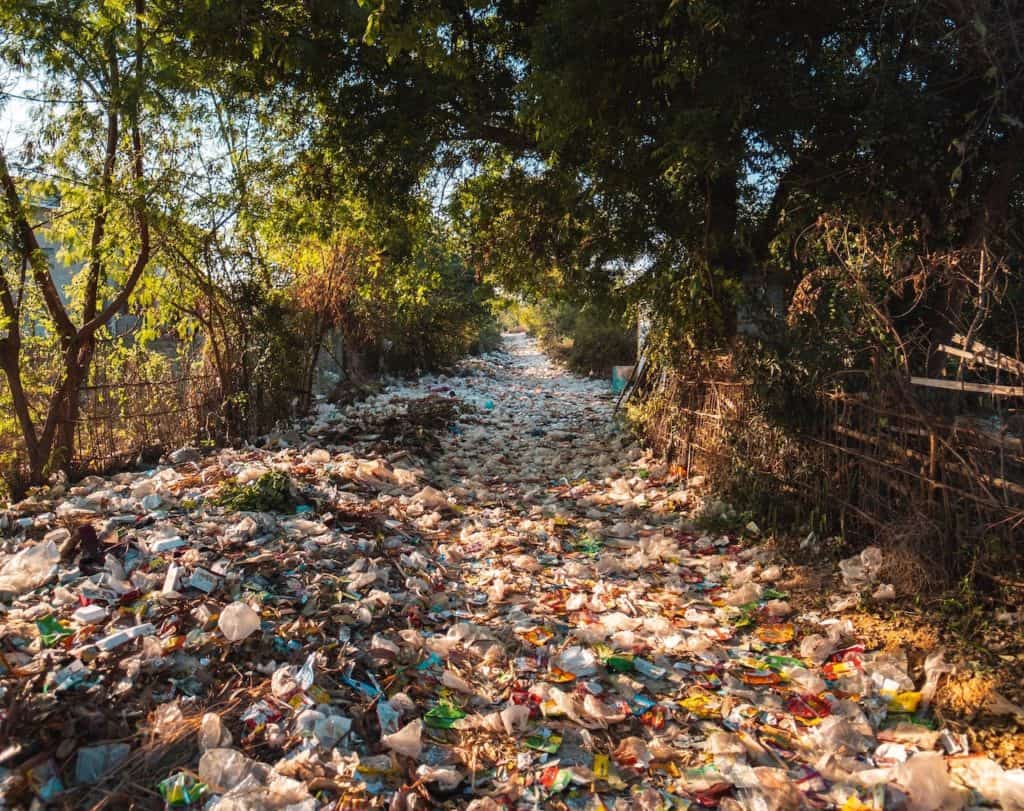The countries with the highest carbon footprint include China, the United States, India, Russia and Japan. Carbon emissions can be created from various activities including burning fossil fuels, agricultural activities, poor waste management and industrial processes.
Studies indicate that over 35 billion metric tons of carbon dioxide (CO2) are emitted globally each year. Annual global carbon dioxide emissions have increased by more than 60% since 1990.
This staggering figure highlights the urgent need to cut back on greenhouse gas (GHG) emissions in order to mitigate climate change. Understanding which countries are the largest contributors is crucial in addressing the problem.
Carbon Emissions By Country (Ranking Positions)
China
China was responsible for 27% of the world’s greenhouse gas emissions in 2019. China has been the world’s top emitter of CO2 for many years. Its rapid industrialisation and reliance on coal have significantly contributed to its total emissions, making it the single largest carbon emitter.
Despite efforts to increase renewable energy capacity, China’s emissions growth has continued, driven by its vast manufacturing sector and growing urban population. Data from the Global Carbon Project shows China’s emissions have skyrocketed since the industrial revolution began, reaching levels never seen before.
United States
The United States ranks second in terms of total emissions. Although it is home to only about 4% of the world’s population, it is responsible for roughly 15% of global emissions.
The country has a high rate of emissions per capita, largely due to its dependence on fossil fuels for energy, transportation, and industry. While there have been efforts to transition towards renewable energy, the U.S. remains one of the largest stop emitters of carbon dioxide.
Its historical contribution to GHG emissions since the industrial revolution also adds to its global impact. However, recent trends show a gradual decline in emissions, as the U.S. shifts towards cleaner energy sources and implements stricter environmental regulations.
India
India is the third-largest emitter of carbon emissions, accounting for around 7% of global emissions. With a rapidly growing economy and population, India’s emissions have seen a steady increase over the years.
Much of India’s carbon footprint comes from its energy sector, which is heavily reliant on coal, as well as from its industrial processes and transportation sector.
India’s focus on renewable energy expansion, particularly solar power, is crucial for curbing future emissions growth.
Russia
Russia ranks fourth, as one of the world’s largest producers and consumers of oil and natural gas, Russia’s carbon emissions stem primarily from its energy sector. Additionally, deforestation and inefficient energy use add to the country’s emissions.
Despite its high total emissions, Russia has relatively low emissions per capita compared to other major emitters, partly due to its large landmass and relatively sparse population. Nevertheless, the country faces significant challenges in transitioning to cleaner energy sources.
Japan
Japan is the fifth-largest carbon emitter, responsible for about 3% of global CO2 emissions. As a highly industrialised nation with a strong manufacturing sector, Japan relies heavily on fossil fuels, particularly oil and natural gas, for its energy needs.
However, Japan has also been at the forefront of developing low-carbon technologies and has committed to reducing its emissions in line with global climate goals.
How We Can Reduce Carbon Emissions
Reducing carbon emissions requires coordinated efforts on a global scale. Nations need to transition away from fossil fuels and invest in cleaner, renewable energy sources such as wind, solar, and hydropower.
Improving energy efficiency in buildings, transportation, and industrial processes can also significantly cut emissions. On an individual level, reducing energy consumption, promoting sustainable transportation, and adopting eco-friendly practices can collectively contribute to lowering the global carbon footprint.
Why Recycling Is Important
Recycling plays a critical role in reducing carbon emissions. Poor waste management contributes to significant greenhouse gas emissions, as waste decomposition releases methane, a potent GHG.
Recycling helps conserve resources, reduces the energy needed to produce new materials, and lowers emissions. By minimising the need for new raw materials, recycling cuts down on the carbon emissions associated with extraction, transportation, and manufacturing processes.
By integrating recycling into daily life, individuals and industries can play an essential part in lowering overall emissions. The European Union, for instance, has made recycling a key component of its strategy to reduce total emissions and achieve its carbon-neutral goals.
At Plastic Expert, we specialise in recycling plastic waste for businesses nationwide. Our team can also collect various other waste types including paper, cardboard, hazardous items and solar panels. This helps businesses manage their waste sustainable and reduce their carbon emissions.








